Moira Butterfield's Blog, page 66
December 10, 2014
Ideas, Themes and Originality by Malachy Doyle
Where do you get your ideas from? That’s one of the questions I’m most often asked. My imagination, I usually say. Memories of childhood, I add. Observation. Experience.
But ideas come from anywhere and everywhere. A phrase overheard on the bus. The person if front of you at the check-out. A picture on a postcard someone sent you from Peru. That silly/strange/funny thing you did/saw/heard/read/thought yesterday.
An idea is just a starting point. Starting points come from anywhere, and lead anywhere. That’s the joy of creativity.
Folk tales are a great starting point, for example. If a story’s survived, in all its many forms, for hundreds, thousands of years, then there’s something deep inside it that cuts to the quick of what it is to be human. Something we can draw on to create a whole new story, a whole new world.
It’s often said that there are only a limited number of themes, a limited range of plots that are appropriate for picture book. That may or may not be so, but the joy of picture book is when the writer finds such a fresh, imaginative and engaging way of telling their story that where it stands in relation to anything that’s been written before becomes irrelevant. It works. It simply works.
So, below, I've jotted down a few basic start points for stories. And then I’ve looked at some of my own picture books to see which of them might fit under each theme:
A puzzle that needs solving: Who Did It?; Sleepy Pendoodle
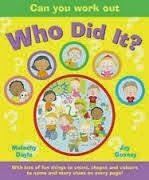
Someone or something that’s lost and needs to be found: Charlie is My Darling; The Snuggle Sandwich; Teddybear Blue
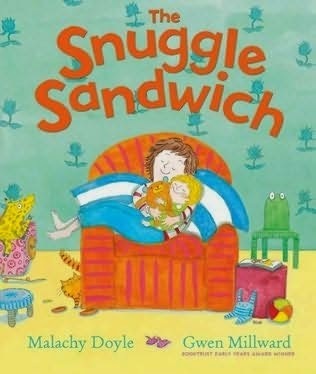
The need to find 'home': Antonio on the Other Side of the World Getting Smaller; Big Pig
Triumph of the youngest / smallest: Too Noisy; Collywobble; Danny the Duck with no Quack; Digger and Lew.

Going on a journey / quest: Little Chick and the Secret of Sleep; The Bold Boy; Blast Off!

Finding a friend: When a Zeeder Met a Xyder
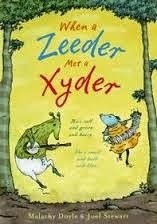
A child’s relationship with a grandparent: Owen and the Mountain; The Dancing Tiger; Tad-cu’s Bobble Hat; Jody’s Beans; Granny Sarah and the Last Red Kite.
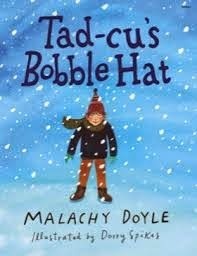
Dealing with an odd/annoying member of the household: Albert and Sarah Jane
Helping, and making friends with, a monster: Hungry! Hungry! Hungry! Having fun with folk tale: Peek-a-Book; Hen’s Cake; The Great Castle of Marshmangle; Una and the Seacloak.
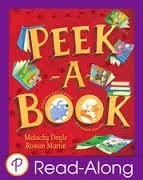
Looked at that way, you can see that even just in my work certain themes recur over and over (I seem to have a thing about grandparents… and being the little one in a big family... oh, and mountains... and getting lost in the woods... )
In most if not all cases I didn't start with the theme - I more often started with a character, a picture in my head, a phrase that came to me out walking....
So yes, as Lynne said in the last post, try to avoid things that have been recently done to death - but don't panic if you think you story isn't 100% original - nothing is. The trick is to find something fresh, something captivating to say with each new story. And to tell it in your very own style, in your very own voice. Then it doesn’t really matter how often the basic theme’s been used before, because it's your story now. And it's a good one - I know it is.
How about you? Do your books/stories use any of these themes as a starting point?Has anyone got any other recurring themes they’d like to offer up? Or any killer one-offs?
Published on December 10, 2014 09:07
December 5, 2014
The Importance Of Researching The Market - Lynne Garner
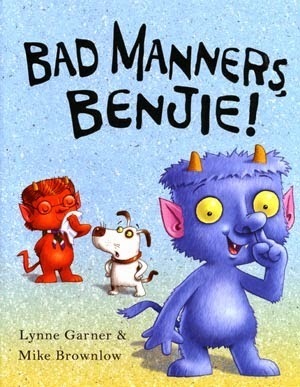 My latest funny story with a twist at the end Over the years I’ve attended writing courses and read a multitude of books all in the hopes of improving my writing and my chances of landing new publishing deals. Time and again I’ve read that if you’re serious about getting published (in any genre) you should research the market. I must admit I also suggest this to my students.
My latest funny story with a twist at the end Over the years I’ve attended writing courses and read a multitude of books all in the hopes of improving my writing and my chances of landing new publishing deals. Time and again I’ve read that if you’re serious about getting published (in any genre) you should research the market. I must admit I also suggest this to my students.Researching means looking in shops to see what has recently been published, visiting the local library (if you’re lucky enough to still have one) and rummaging in the book box at your dentists or doctors. However this only gives you an idea of what an editor was looking for around two years ago. This is because it can take up to two years for a picture book to reach the shelves. I've heard of some books that have taken far longer than that.
So what is all the point of this research? Well it tells you what not to write.
At the moment it would appear wizards are so yesterday, vampires have been done to death and pirates are washed-up. So there is little point (if you want to see your work in print) in writing a book for an already saturated market. Thankfully when I was in the process of writing Bad Manners, Benji! (released February 2014) an editor had advised me that she was looking for a story that:Had an element of humourWas aimed at boysHad a twist at the endWas driven by strong characters
Sadly I haven't received such helpful advice recently, so I've had to research what not to write and look for possible gaps in the market. One gap I think I've found is based on the changes happening in our education system. In the recent set of changes part of the curriculum states that children in year one and two should be “becoming very familiar with key stories, fairy stories and traditional tales …” Thankfully I have a couple of stories ready to go which might just fill this gap.
However this doesn't tell me what the market will want once I've sent these off and I'm planning my next set of stories. So I'm going to take a chance and write a few stories just for me. If I like them and they pass the Picture Book Den Team critique red pen (one of the perks of being a member of such a fab group, we support one another by swapping manuscripts every so often) I may just take the plunge and send them to a publisher. With fingers crossed I may just be ahead of the game and write a story that fits the requirements of an ever changing market.
Lynne Garner
My writing eCourses which starting January 2015:How to write children's picture books and get published5 picture books in 5 weeks (advanced course)How to write a hobby-based how to book
Published on December 05, 2014 23:30
November 30, 2014
The Magic of Christmas by Garry Parsons (Guest blog)
We’re delighted to welcome this month’s guest blogger, Garry Parsons, who is an award-winning picture book illustrator. Garry discusses capturing the essence of Christmas and make-believe, from the Toenail Fairy to Father Christmas.
My five year-old son believes in Father Christmas and the Tooth Fairy unequivocally
and without question.
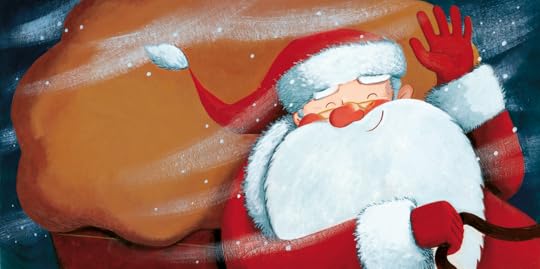 from The Tooth Fairy’s Christmas by Peter Bently and Garry Parsons He is yet to lose a tooth himself but I know when the time comes that he will take it on board wholeheartedly. I know this because aside from mentioning Father Christmas all year round he has also taken on the existence of the Toenail Fairy, invented by his parents to ease his aversion to having his toenails cut. For my part, the presence of the Toenail Fairy amounts to creeping into his room after dark with a head torch and nail clippers and hoping he doesn’t wake after the first ‘click’. The Toenail Fairy gives a Malteser per toenail, not cash, in case you were wondering, and being concerned not to stain the bed sheets with chocolate, leaves the Maltesers in a bowl next to the bed. But for my son, there is no reason to doubt that the Toenail Fairy exists.
from The Tooth Fairy’s Christmas by Peter Bently and Garry Parsons He is yet to lose a tooth himself but I know when the time comes that he will take it on board wholeheartedly. I know this because aside from mentioning Father Christmas all year round he has also taken on the existence of the Toenail Fairy, invented by his parents to ease his aversion to having his toenails cut. For my part, the presence of the Toenail Fairy amounts to creeping into his room after dark with a head torch and nail clippers and hoping he doesn’t wake after the first ‘click’. The Toenail Fairy gives a Malteser per toenail, not cash, in case you were wondering, and being concerned not to stain the bed sheets with chocolate, leaves the Maltesers in a bowl next to the bed. But for my son, there is no reason to doubt that the Toenail Fairy exists.  from The Tooth Fairy’s Christmas by Peter Bently and Garry ParsonsI can’t remember the moment Father Christmas ceased to be real for me as a child, but I do remember the magic that surrounded him when I did believe. I’m sure having an elder brother accelerates Santa’s demise for younger siblings, but it’s my wish for my son that his belief in Father Christmas continues as long as possible.
from The Tooth Fairy’s Christmas by Peter Bently and Garry ParsonsI can’t remember the moment Father Christmas ceased to be real for me as a child, but I do remember the magic that surrounded him when I did believe. I’m sure having an elder brother accelerates Santa’s demise for younger siblings, but it’s my wish for my son that his belief in Father Christmas continues as long as possible. For that reason I will do what I can to gently perpetuate his presence. But what I’ve noticed as I’ve become older is that I’ve fallen back in love with the idea of magic myself. As if the mystery and magic of the world has had a resurgence inside me.
I often find myself rushing to the window to witness a rainbow or a pink sunset or an orange moon or adding up symbols I’ve seen as I walk down the street, piecing together moments or words or images which somehow start to shape some other language inside me, giving me a warm sense of wonder that some other world is operating just outside of the everyday normality that we are all so used to. As Freddie Mercury would say, “It’s a kinda magic.”
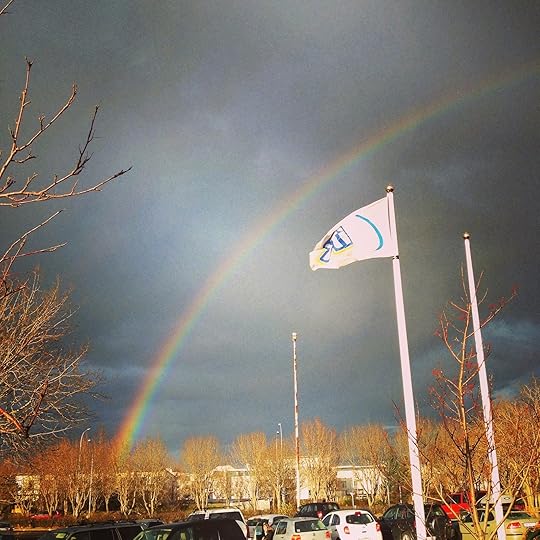 Rainbow over Reykjavik, Iceland
Rainbow over Reykjavik, IcelandEach year my family spends two weeks in Iceland. My son and I were trying to recall just how many rainbows we saw on a certain day the year before and came to the agreement that whilst walking from the Hallgrímskirkja to Perlan in Reykjavik, a distance of 1.8km, we saw seven separate rainbows. My son has inherited my enthusiasm for ‘collecting’ rainbows and we like to think Iceland is the rainbow capital of the world. Without doubt, Iceland is a magical place, especially if you can travel, even a short distance, away from the main city. Its climate, strange landscapes, rapidly changing weather and dancing aurora give it a magic that gets under your skin.
 Ice chunks at Jökulsárlón, glacial river lagoon, IcelandThis morning in Reykjavik we woke up to a blanket of snow outside. “Is it Christmas?” my son asked. “No,” I answered, “it’s October.” But in some ways he was right, the magic was there, just outside the window. So when I was invited to work on a Christmas picture book, I knew it was this elusive element that I wanted to attempt to capture, the Christmas spirit, the seasonal essence, the magic of Christmas, and to do so in acrylic. I had the challenge of depicting our beloved Father Christmas as a credible, caring, warm guardian of children.
Ice chunks at Jökulsárlón, glacial river lagoon, IcelandThis morning in Reykjavik we woke up to a blanket of snow outside. “Is it Christmas?” my son asked. “No,” I answered, “it’s October.” But in some ways he was right, the magic was there, just outside the window. So when I was invited to work on a Christmas picture book, I knew it was this elusive element that I wanted to attempt to capture, the Christmas spirit, the seasonal essence, the magic of Christmas, and to do so in acrylic. I had the challenge of depicting our beloved Father Christmas as a credible, caring, warm guardian of children. As well as wanting him to be witty and charming, I also needed him to have a little of the quality of magic about him. Consequently, Christmas in my studio stretched from September until early March.
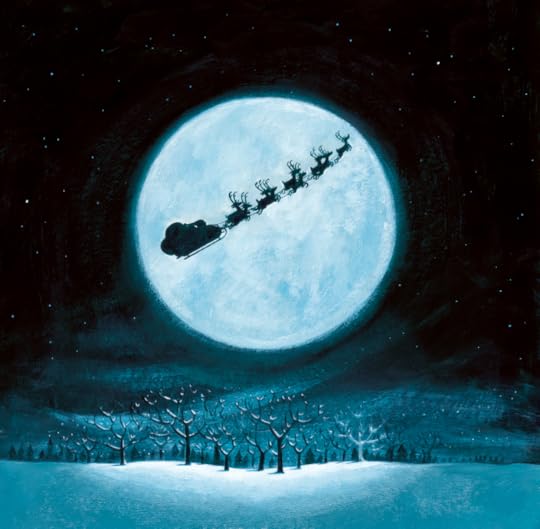 from The Tooth Fairy’s Christmas by Peter Bently and Gary Parsons
from The Tooth Fairy’s Christmas by Peter Bently and Gary ParsonsSo this year I’m excited. Not only have I had another chance to explore Iceland (and I have another son to share Iceland and Christmas with), but also my love for the notion of magic continues, be it rainbows or Santa, and somehow that convinces me that picture books really can do magic.
Continuing the festive theme, Garry is also the illustrator of The Dinosaur That Pooped Christmas by Tom Fletcher & Dougie Poynter and Daisy and the Trouble with Christmas by Kes Gray.
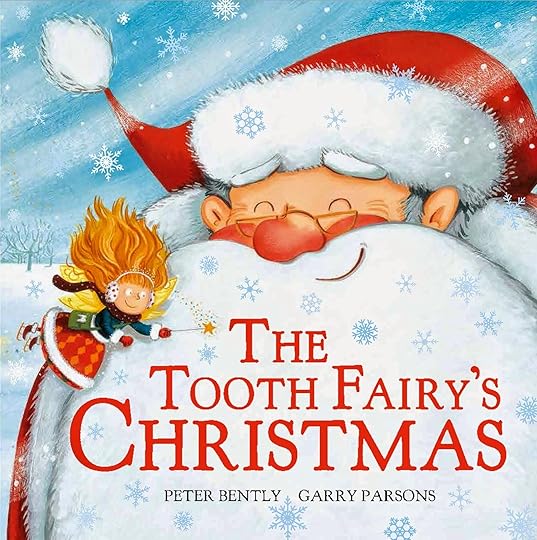
Garry Parsons is the award-winning illustrator of many books, including There's An Ouch In My Pouch by Jeanne Willis, the best selling The Dinosaur that Pooped... series by Tom Fletcher and Dougie Poynter, George’s Secret Key to the Universe by Lucy and Stephen Hawking and Billy’s Bucket by Kes Gray. Visit him at GarryParsons.co.uk. Follow him on twitter @icandrawdinos
The Tooth Fairy’s Christmas by Peter Bently and illustrated by Garry Parsons (Hodder Children’s Books).
Published on November 30, 2014 20:00
November 25, 2014
Ten signs that you’re a picture book writer by Jane Clarke
I didn't set out to be a picture book writer, I intended to write novels. So for anyone else who is as confused as I was…
You know you’re a picture book writer if:
You seriously consider the point of view of talking animals.
 From The Far Side by Gary Larson
From The Far Side by Gary LarsonYour story spends more time in your head than it does getting it down on paper.
 One of Julia Woolf's fab sketches from my post on ideas composting
One of Julia Woolf's fab sketches from my post on ideas composting
http://picturebookden.blogspot.co.uk/2013/03/ideas-composting-by-jane-clarke.html
You see your story in pictures even though you’re not an illustrator. You can't resist planning it out in ten to twelve spreads.
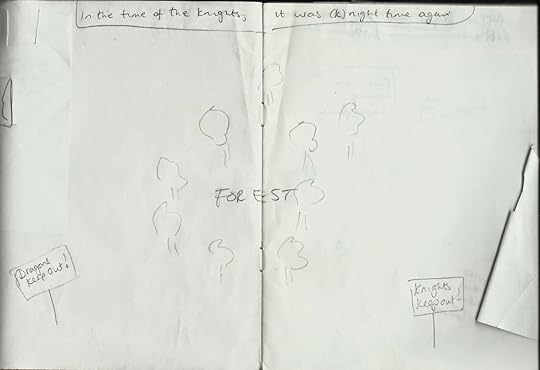 This is how Knight Time looked before Jane Massey's wonderful illustrations
This is how Knight Time looked before Jane Massey's wonderful illustrationsYou automatically think
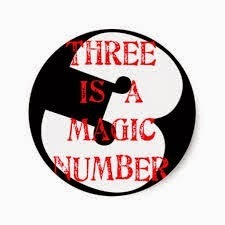 You get more satisfaction crafting a story in 400 words than you do writing it in 4,000 or 40,000 words.
You get more satisfaction crafting a story in 400 words than you do writing it in 4,000 or 40,000 words. You have lots of fun thinking of awful puns (often removed by editor) and adding layers that the adult reading it will enjoy as well as the child.
 From Gilbert the Great illustrated by Charles Fuge. The name of the boat references the Jaws films.
From Gilbert the Great illustrated by Charles Fuge. The name of the boat references the Jaws films.You spend ages agonising over a word.

Steam comes out your ears when someone implies that writing a picture book is easy.
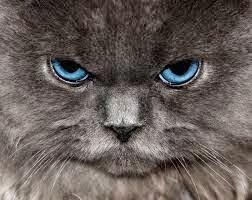 Grrr! Picture books require skill.
Grrr! Picture books require skill.You're reading posts on The Picture Book Den!Please add to the list in the comments.
Jane's currently working on a series of toddler board books for Penguin Random House, three picture books for Nosy Crow, and a series called Dr KittyCat for OUP.
www.jane-clarke.co.uk www.facebook.com/JaneClarkeChildrensAuthor
Published on November 25, 2014 23:00
November 20, 2014
True Story Picture Books (or Creative Non-Fiction: It’s All About the Story) by Juliet Clare Bell
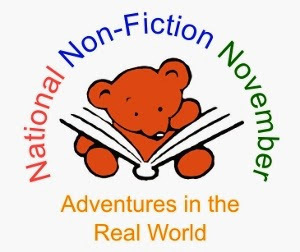
Are you sitting comfortably?
I’m not.
I’m itching to get up and discover. I feel like a puppy who hasn’t quite worked out which way she wants to go first and is darting from one place to another, happily, but slightly barking…
I’ve got the bug back. After feeling uninspired for quite some time, I’m very very excited about writing picture books again. I feel like I’ve re-understood something I knew a while back when I was writing my chocolate book, but had kind of forgotten.
I’m writing this in National Non-fiction November, in praise of non-fiction -although I reckon the term ‘non-fiction’ has a dry, almost negative, feel about it. Almost as if it’s not something worthy of a term in its own right, just that it is not something else. It’s not fiction, which I as an author –and reader- love. But what I love about fiction is STORY. And the best non-fiction is exactly that. So I’m re-thinking how I think of it in my head: I write picture books and at the moment, the picture books that I’m really drawn to writing are true story picture books, which sounds more fun than non-something else (to me, at least).
So what’s the real difference?
Apart from the fact that the story is true, there isn’t a great difference –if you do it really well. A great true story picture book still makes the best use of language and rhythm, repetition and sometimes even rhyme. It still makes use of the form of the picture book –exciting readers by interesting use of page turns.
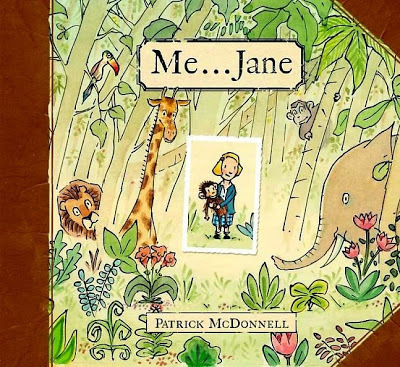 The beautiful Me...Jane by Patrick McDonnell (Little, Brown, 2011).
The beautiful Me...Jane by Patrick McDonnell (Little, Brown, 2011).It still exploits the rule of threes…
Story has to be at the very heart of it.
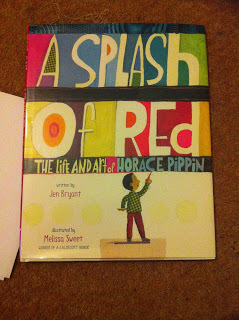 A Splash of Red: The Life and Art of Horace Pippin (Jen Bryant and Melissa Sweet; Knopf; 2013)
A Splash of Red: The Life and Art of Horace Pippin (Jen Bryant and Melissa Sweet; Knopf; 2013)And your heart has to be at the very heart of it too, when you’re writing it. Don’t write a true story picture book if the story doesn’t fire you up, first because your reader won’t love it, and also, because you’ve got to research and research takes time. Lots of time.
A close writer friend, Rebecca Colby, and I, were part of the Breaking into Nonfiction panel at the recent British SCBWI annual conference. Anita Loughrey blogged about the panel here.
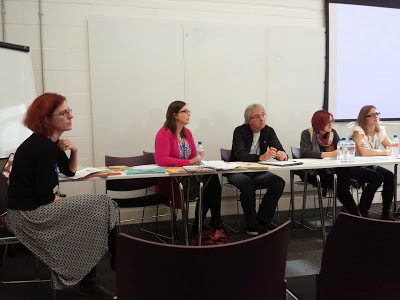 Me on the far left, with Rebecca, next left at the Nonfiction Panel at the 2014 British SCBWI Annual Conference, Steve Rickard (Ransom), Sophie Thomson (Pearson) and Kersti Worsley (OUP).
Me on the far left, with Rebecca, next left at the Nonfiction Panel at the 2014 British SCBWI Annual Conference, Steve Rickard (Ransom), Sophie Thomson (Pearson) and Kersti Worsley (OUP).It was loads of fun and we talked with lots of other writers and editors who were similarly fired up by the idea of beautifully crafted picture books that tell true stories. It feels like something really special is in the air… UK editors are certainly seemingly more interested now than before, but what’s changing?
I wrote about the market for creative non-fiction picture books in an earlier PBD blog post about the Cadbury book I was researching at the time. With the Common Core (adopted by almost all states in the US), 50% of texts for upper primary aged children in schools need to be informational, which means that publishers are taking on many more new true story picture books than ever before. And they’re winning prizes that have traditionally been won by fictional picture books.
And now in the UK, Nosy Crow has teamed up with the National Trust to produce children’s books that relate to National Trust properties. Although the UK market isn’t going to be as big as the US market (given their schools and library market in the light of the Common Core), I think that UK publishers are looking closely at what’s happening in the US market. It’s a really exciting time to be writing in this area.
So, what should you write about?
There are so many thousands of amazing stories out there, waiting to be told. It’s true of fiction ones, and it’s true of real life ones. What you need to do is be receptive to looking/listening out for them.
Here are some things you can do:
Talk to people
Talk to your family. What true stories did you love as a child? Growing up in our family of eight, we used to sit around for hours at the dinner table eating lots but talking even more. My parents were natural storytellers and loved telling, as well as reading, us stories. So I talked with my sister yesterday on the phone for over an hour and together we came up with over sixty ideas for true story picture books. Sixty (that’s this year’s PiBoIdMo sorted)… No wonder I’m on a crazy writing high today… My dad and his lovely new wife came up with a great idea for one, too, when we were chatting about it a few weeks ago. And today, I arranged to go on a really exciting research trip for one of these ideas in just two weeks’ time with another sister who feels similarly excited about the potential project. What a brilliant way to hang out with your favourite people and come up with great ideas/do research at the same time!
What true stories have captured your children's imaginations? What are they doing at school that’s really interesting? My ten-year-old came home from school earlier this week having seen half of a documentary about something (sorry –can’t say what, as I’ve nicked the idea for myself). They were going to watch the other half the next day. When she said to her teacher “I don’t think I can wait till tomorrow cos it’s too exciting!” her teacher said “Please don’t watch it at home [it was on Youtube]. I can’t wait to see all your faces when you see what happens!” So a topic that the children and teacher were all really excited about… Talk to your children (or other primary-aged children).
Talk to librarians and library staff.
They’re brilliant for knowing what people come in looking for and for saying what’s been covered before but not been done well. They’re also pretty fun people to hang out with (thanks to my lovely Kings Heath Library friend who I was out with last night, who told me about certain famous people who’d been written about lots but never in an exciting enough way.) Go on, you know you want to... Have fun and support your local libraries at the same time.
Given that the National Trust and Nosy Crow are now in partnership, have a look at different National Trust properties and land and think of what related stories are there to be told that really fire your imagination…

Watch telly, listen to radio programmes, read newspapers...
Check out the US Common Core -whether you're writing in the UK or the US or anywhere else.
I love stories and people. I want to understand better why people do the things they do (which is why I was a psychologist for so many years in my life-before-children). So for me, I’m fascinated by the person behind the invention/organisation/discovery...
Which inventions/organisations/discoveries fascinate you?
 It could be the story behind the invention of the toilet... (Curse you, tiny toilet -I did actually have to look up 'how to draw a toilet' to get something even vaguely resembling one)
It could be the story behind the invention of the toilet... (Curse you, tiny toilet -I did actually have to look up 'how to draw a toilet' to get something even vaguely resembling one)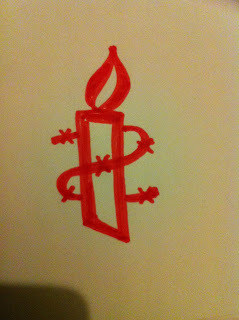 Or it could be a favourite organisation...
Or it could be a favourite organisation...You can research them superficially and quickly to find which of them has a great real life story behind it. We came up with sixty ideas, seventeen of which I’m feeling really excited about. Those seventeen might result in my following up, perhaps, eight really seriously over the coming year. And mostly from brainstorming with a sister who I’d happily spend hours every day talking to about anything. This really is something you can have heaps of fun with.
Think about organisations behind the stories that you love. Is it possible that they could commission you to write a story for them? For my next book, More Than a Chocolate Factory: The Remarkable Story of the Cadbury Brothers,
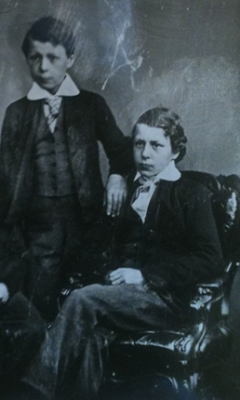 Richard and George Cadbury (c) Cadbury Archive
Richard and George Cadbury (c) Cadbury Archiveit was Bournville Village Trust that approached me (and Jess Mikhail, the illustrator) and commissioned us rather than the other way round, but I would absolutely approach an organisation now if I felt that I loved a story that related to them and could do it justice. And I’ve loved the whole social reform and philanthropy side of the Cadbury story so much that I’m really interested in writing more stories with that at its heart.
Finally, think about stories where someone has done something against the odds . Could you turn that into a story that children will love and be inspired by?
The biggest problem may be curbing your enthusiasm. Right now I feel a bit like the guy from The Fast Show, who thinks everything is "brilliant!"
And one brilliant thought leads to another… and another…
I’ve had loads of fun brainstorming ideas and now it’s time to do the superficial research on the ones I’m too excited about not to check out now. I’ve set myself a deadline for emailing a list and a summary of a number of ideas for true story picture books that I promised I’d send to an editor. So next week I’m going to be researching all week to whittle it down to a manageable number of ideas to work with for now.
To anyone thinking of writing true stories for children, and to those who are already doing it, good luck. There are SO many stories out there, I think there’s room for lots of us to tell the amazing stories that amaze us.
(There’s a brilliant facebook group that is dedicated to non-fiction picture books: Wownonficpic, and a great four-week online course run by Kristen Fulton).
Do you have any tips for coming up with great ideas for true story picture books? If you’re happy to share, we’d love to read them in the comments below.
Juliet Clare Bell is author of The Kite Princess (Barefoot Books, recently endorsed by Amnesty International) and Don’t Panic, Annika! (Piccadilly Press, recently featured on CBeebies). Her next picture book, More Than a Chocolate Factory: The Remarkable Story of Richard and George Cadbury, was commissioned by Bournville Village Trust, and is currently being illustrated by Jess Mikhail. She has seriously got the bug for telling true stories in her favourite form, picture books.
Clare lives happily in Birmingham, UK, with her three children (always a source of inspiration for true life and fictional stories, and life in general), almost within sniffing distance of the chocolate factory which she’s written about. Which is brilliant…
www.julietclarebell.com
National Non-Fiction November is the Federation of Children’s Book Groups’ annual celebration of all things factual. Born out of National Non-Fiction Day, the brain child of Adam Lancaster during his years as Chair, the whole month now celebrates all those readers that have a passion for information and facts and attempts to bring non fiction celebration in line with those of fiction.
Published on November 20, 2014 17:00
November 15, 2014
MARVELLOUS MACHINES: Technology in picture book illustration • Jonathan Emmett
 Understanding how it all fits together is no mean feat.
Understanding how it all fits together is no mean feat.One of David Parkins's techtastic illustrations for Eileen Browne's story, No Problem.
I’m a bit of a technophile and several of my picture books, such as Callum’s Incredible Construction Kit and Tom’s Clockwork Dragon have a technological theme. I’d like to think that my enthusiasm for technology comes across in my writing, but the writing only tells half the story in a picture book, the other half being told by the illustrations.
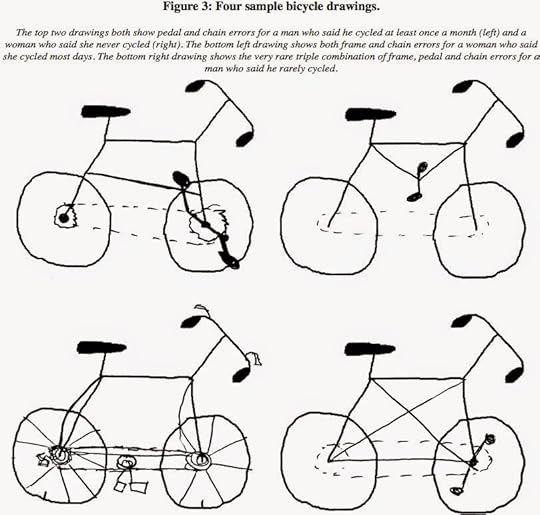 Some of the fundamentally flawed bicycle
Some of the fundamentally flawed bicycledrawings from Rebecca Lawson’s studyTo draw a machine or mechanism well, an illustrator has to understand how it’s put together and operates. This cognitive skill doesn’t always go hand in hand with artistic ability and is relatively uncommon, not just among illustrators, but among the population as a whole.
Cognitive psychologist Rebecca Lawson demonstrated this last point with a series of experiments in which subjects were asked to either draw or complete a drawing of a bicycle. The bicycle is a simple machine that most people will have been familiar with from an early age and even non-cyclists encounter them regularly. While many people may think that they understand how a bicycle is put together, Lawson’s experiments (which she later published as a paper) show that relatively few people are able to draw one without making fundamental errors — even when they are shown a real bicycle as they're being tested!
Having established how rare this ability is, here are 10 techtastic picture book illustrators who excel at drawing machines.
You can see every nut, bolt and washer in David Parkins ’s wonderful illustrations for No Problem, written by Eileen Browne. This book is one of my all-time favourite picture books about technology and was a huge bedtime favourite of my son’s.

The extraordinary Chris Riddell seems to excel at drawing everything and technology is no exception. The robots that inhabit Wendel’s Workshop demonstrate how technically detailed illustrations can also be brimming with character.
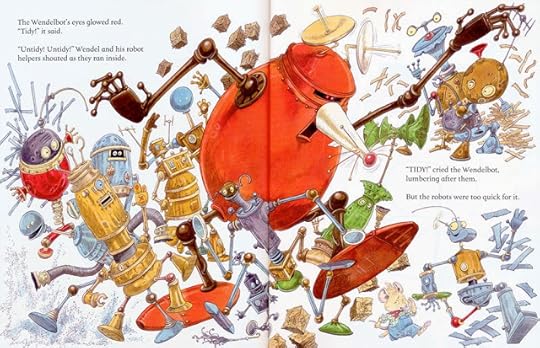
Mark Oliver, who created Monster’s - An Owner’s Guide with me, cites his engineer father as an inspiration for much of his work. Mark once told me that the key to drawing technology well is that, “it has to look like it could work.”

Jonny Duddle ’s The King of Space is full of superbly drawn spaceships and robots. Rex, the book’s anti-hero, lives on a farm which may be why the huge “warbot” he constructs looks like it’s made from tractor parts.
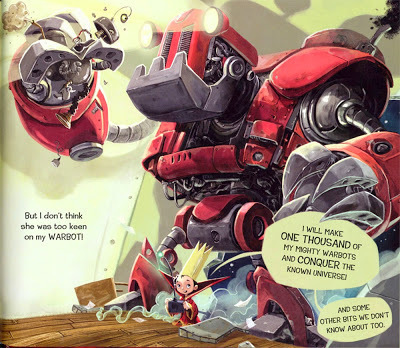
Ted Dewan ’s re-telling of The Sorcerer’s Apprentice replaces magic with technology, and the work-shy human apprentice with an equally work-shy robot.

Although some of Callum’s creations in Callum’s Incredible Construction Kit are huge, Ben Mantle ’s brilliantly detailed illustrations make it clear that they are constructed from pieces that a child could handle and assemble on his own.

William Bee ’s illustrations for And the Train Goes are packed with the sort of wonderful technical detail that’s rarely found in picture books for the very young.

While cross sections are more commonly found in non-fiction, Steve Cox ’s design for the crocodile submarine in our picture book The Treasure of Captain Claw was so stunning that publisher Orchard gave Steve this huge gatefold to show it off. Click here to see a much larger version in Steve's Flickr album.

No list of techtastic illustrators is complete, without the grandaddy of them all, Heath Robinson. This illustration is from Railway Ribaldry , published for the centenary of the Great Western Railway in 1935.
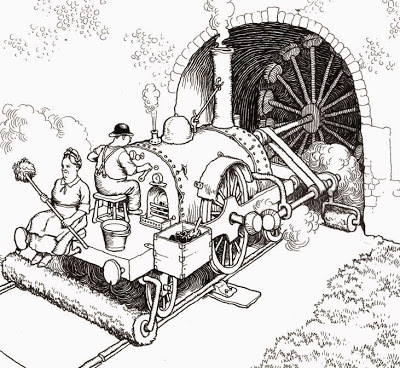
And finally, I couldn’t resist sneaking in an illustration from The Clockwork Dragon (a reworking of Tom’s Clockwork Dragon), my forthcoming picture book with Elys Dolan . Elys is a self-confessed armour nut, and this certainly shows in her splendid illustrations of the eponymous dragon, which is made from recycled from arms and armour.

Do you have a favourite picture book featuring marvellous machinery that I haven’t mentioned? If so, tell us about it in the comment box below.
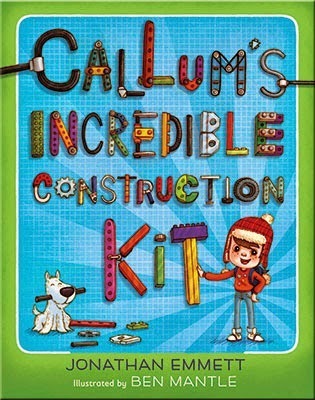 Jonathan Emmett's most recent techtastic picture book is
Callum’s Incredible Construction Kit
, illustrated by Ben Mantle and published by Egmont.
Jonathan Emmett's most recent techtastic picture book is
Callum’s Incredible Construction Kit
, illustrated by Ben Mantle and published by Egmont.
Find out more about Jonathan and his books at his Scribble Street web site or his blog. You can also follow Jonathan on twitter @scribblestreet.
See all of Jonathan's posts for Picture Book Den.
Published on November 15, 2014 23:00
November 10, 2014
The Curse of Busy-ness by Abie Longstaff
It's coming up to Christmas season. The shops are full of decorations, the ads are on the telly and the kids are behaving extra well just in case Santa's making a list and checking it twice.
I do love Christmas. I'm one of those people who gets ridiculously excited about the whole thing. I love seeing my family and consuming my weight in cheese. I'd happily have a glass of mulled wine with a mince pie any time of year.
But...for me the run up to Christmas is often filled with a growing sense of panic.
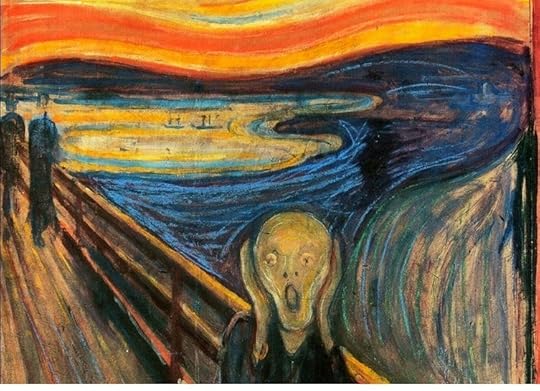
This time of year I suffer from the curse of busy-ness. It seems like there are never enough hours in the day to get everything done and every task is done at full speed.
Like many authors I have extra events to do or attend. I also have a Christmas book out which needs promoting. I have my day job, and my kids...and the Australian Christmas cards that need writing and posting...and every other reason to dash around like a headless chicken.
Only - the other day, because I was so busy, I didn't notice a good friend of mine was ill. I'd let my rushing around get in the way of something really important.
As picture book writers we need space to dream, and time to do it. As I run madly from one job to the next, scribbling on the train to make up lost time, I'm starting not to enjoy my creative work. I've been curtailing my day-dreaming time, cramming it between tasks. That's not the way to write. Worse; I've been neglecting my friends.
So my well-before-new-year's resolution is to slooooow down.
I've found some lovely bird song to listen to (it's tropical to remind me of growing up in Hong Kong):
I'm focusing on enjoying the journey; gazing out of the window instead of editing a book.

I'm going for a walk by the sea as often as I can.

I'm meeting up with my good friend next week.
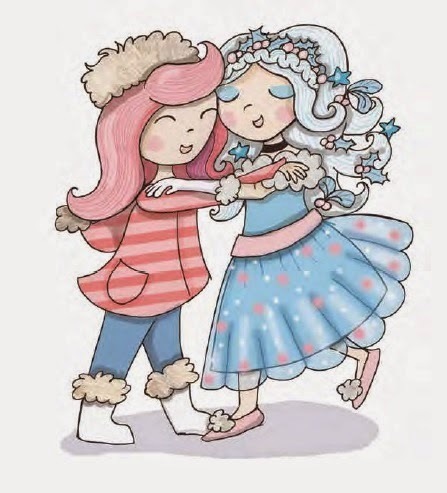
And I found this lovely video of a craftsman who knows how to take time to make his creations perfect:
Wishing you all strength and TIME to cope with the pre-Christmas season,
Abie
(My new book is The Fairytale Hairdresser and Father Christmas)

I do love Christmas. I'm one of those people who gets ridiculously excited about the whole thing. I love seeing my family and consuming my weight in cheese. I'd happily have a glass of mulled wine with a mince pie any time of year.
But...for me the run up to Christmas is often filled with a growing sense of panic.

This time of year I suffer from the curse of busy-ness. It seems like there are never enough hours in the day to get everything done and every task is done at full speed.
Like many authors I have extra events to do or attend. I also have a Christmas book out which needs promoting. I have my day job, and my kids...and the Australian Christmas cards that need writing and posting...and every other reason to dash around like a headless chicken.
Only - the other day, because I was so busy, I didn't notice a good friend of mine was ill. I'd let my rushing around get in the way of something really important.
As picture book writers we need space to dream, and time to do it. As I run madly from one job to the next, scribbling on the train to make up lost time, I'm starting not to enjoy my creative work. I've been curtailing my day-dreaming time, cramming it between tasks. That's not the way to write. Worse; I've been neglecting my friends.
So my well-before-new-year's resolution is to slooooow down.
I've found some lovely bird song to listen to (it's tropical to remind me of growing up in Hong Kong):
I'm focusing on enjoying the journey; gazing out of the window instead of editing a book.

I'm going for a walk by the sea as often as I can.

I'm meeting up with my good friend next week.

And I found this lovely video of a craftsman who knows how to take time to make his creations perfect:
Wishing you all strength and TIME to cope with the pre-Christmas season,
Abie
(My new book is The Fairytale Hairdresser and Father Christmas)

Published on November 10, 2014 23:00
November 5, 2014
Plot Twists that Zing! - by Natascha Biebow
So you’ve written a picture book and it’s got a beginning, middle and an end, but it doesn’t yet zing . . . You’re still left asking, "So what?"
What can you do?
Lately, I’ve been noticing that the picture books that tickle my fancy are those that have something extra – a twist.

Remember I blogged about creating a breakout premise? Well, if you can surprise the reader and add some humour or unpredictability to your premise, you are definitely on your way towards creating a premise that is extraordinary.
Children love extraordinary flights of the imagination. They relish the unpredictable!
Here are some ways to add a twist to your book:
1. Give your premise a twist:
If you can turn the predictable on its head, you are headed for a premise that equals a distinctive USP (unique selling point). Editors, sales people, booksellers, librarians, children and all kinds of readers just love that!
Aliens that love underpants . . .
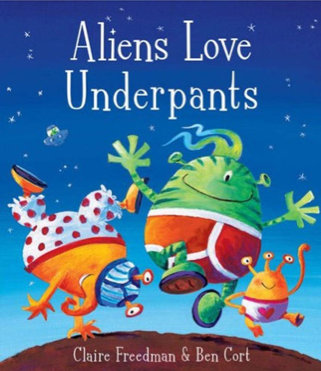 Aliens Love Underpants by Freedman & Cort
Aliens Love Underpants by Freedman & Cort Pirates that are . . .
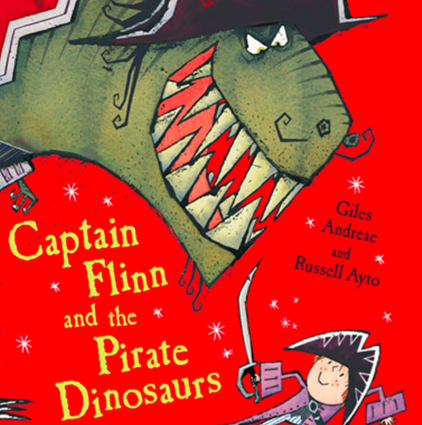 Captain Flinn and the Pirate Dinosaurs by Andreae & Ayto
Captain Flinn and the Pirate Dinosaurs by Andreae & Ayto. . . dinosaurs!
 from Captain Flinn and the Pirate Dinosaurs by Andreae & Ayto
from Captain Flinn and the Pirate Dinosaurs by Andreae & Ayto 2. Give your characters a twist:
The Gruffalo really does exist . . .
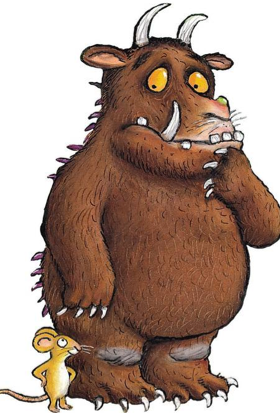 from The Gruffalo by Donaldson & Sheffler
from The Gruffalo by Donaldson & Sheffler. . . plus the tiny mouse is cleverer and braver even than this fierce-looking beastie!
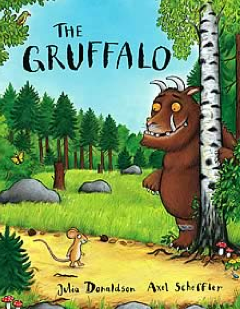 The Gruffalo by Donaldson & Sheffler
The Gruffalo by Donaldson & Sheffler This is Goldilocks’ story . . .
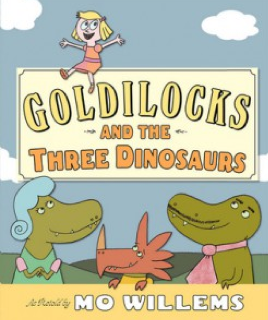 Goldilocks and the Three Dinosaurs by Mo Willems
Goldilocks and the Three Dinosaurs by Mo Willems . . . but no bears live here!
 from Goldilocks and the Three Dinosaurs by Mo Willems
from Goldilocks and the Three Dinosaurs by Mo WillemsThis crocodile . . .
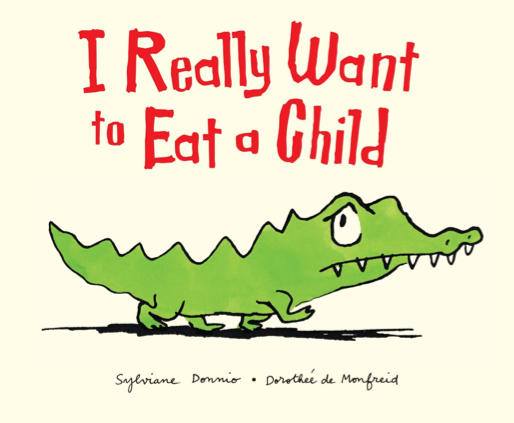 I Really Want to Eat a Child by Donnio and De Monfreid
I Really Want to Eat a Child by Donnio and De Monfreid. . . needs to eat bananas to get big and strong after all – not a child!
 from I Really Want to Eat a Child by Donnio and De Monfreid
from I Really Want to Eat a Child by Donnio and De Monfreid 3. Give your plot a twist:
Two families plan to swap houses for their holiday . . .
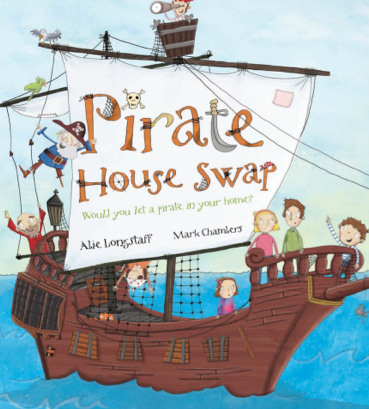 Pirate House Swap by Longstaff & ChambersBut one is not quite what they expected . . .
Pirate House Swap by Longstaff & ChambersBut one is not quite what they expected . . . Pirate House Swap by Longstaff & Chambers
Pirate House Swap by Longstaff & ChambersGrandma mustn’t find out about the lion . . .
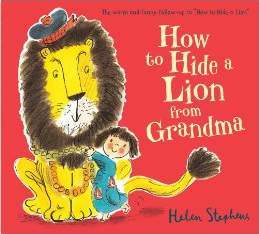 How to Hide a Lion from Grandma by Helen Stephens
How to Hide a Lion from Grandma by Helen Stephens . . . but she has a secret too – she's hiding a bear in her bedroom!
 from How to Hide a Lion from Grandma by Helen Stephens4. Give your ending a twist:
from How to Hide a Lion from Grandma by Helen Stephens4. Give your ending a twist: Daisy doesn’t like peas!
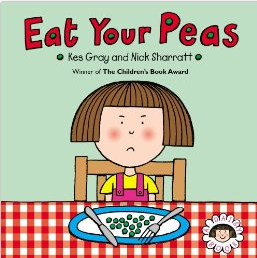 Eat Your Peas by Gray & Sharratt
Eat Your Peas by Gray & Sharratt But she will only eat her peas if her mum eats her Brussels.
And Mum doesn't like Brussels . . .
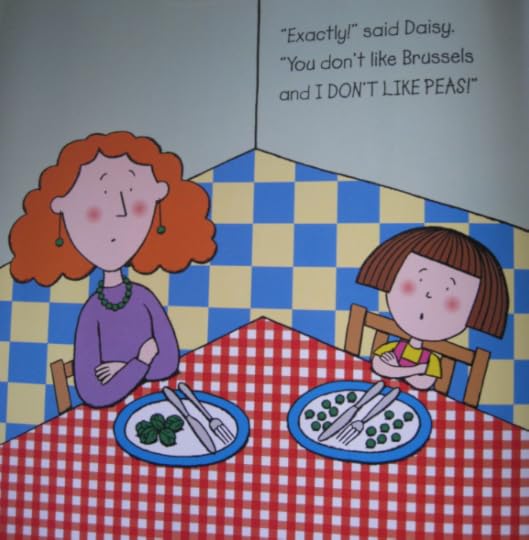 from Eat Your Peas by Gray & SharrattBut they
both
like pudding!
from Eat Your Peas by Gray & SharrattBut they
both
like pudding! from Eat Your Peas by Gray & Sharratt The mammoth actually belongs to the boy . . .
from Eat Your Peas by Gray & Sharratt The mammoth actually belongs to the boy . . .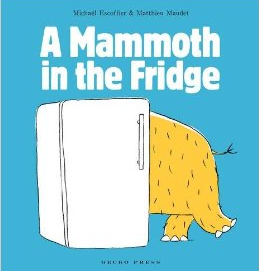 A Mammoth in the Fridge by Escoffier & Maudet
A Mammoth in the Fridge by Escoffier & Maudet . . . and he's not the only animal in the boy's bedroom!
 from A Mammoth in the Fridge by Escoffier & Maudet A gorilla has come to visit . . .
from A Mammoth in the Fridge by Escoffier & Maudet A gorilla has come to visit . . .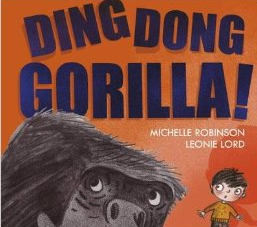 Ding Dong Gorilla! by Robinson & Lord
Ding Dong Gorilla! by Robinson & Lord . . . but not only did he make the mess – he left with the last of the pizza!
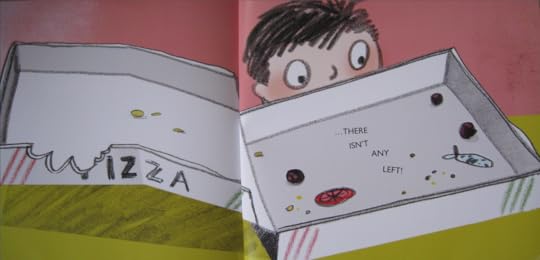 from Ding Dong Gorilla! by Robinson & LordBilly warned Dad that there were all kinds of sea creatures in his birthday bucket . . .
from Ding Dong Gorilla! by Robinson & LordBilly warned Dad that there were all kinds of sea creatures in his birthday bucket . . .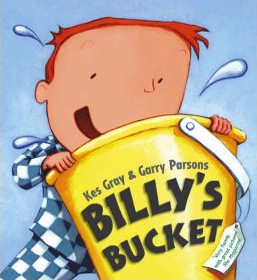 Billy's Bucket by Gray & Parsons. . . but Dad borrowed it to clean the car anyway . . .
Billy's Bucket by Gray & Parsons. . . but Dad borrowed it to clean the car anyway . . .
 from Billy's Bucket by Gray & Parsons
from Billy's Bucket by Gray & ParsonsWhat others can you think of?
Give it a twist and it will zing!
_________________________________________________
Natascha Biebow Author, Editor and Mentor
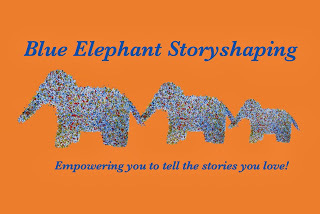 Blue Elephant Storyshaping is an editing, coaching and mentoring service aimed at empowering writers and illustrators to fine-tune their work pre-submission. Check out my NEW small group coaching courses!
Blue Elephant Storyshaping is an editing, coaching and mentoring service aimed at empowering writers and illustrators to fine-tune their work pre-submission. Check out my NEW small group coaching courses!Natascha is also the author of Elephants Never Forget and Is This My Nose?, editor of numerous award-winning children’s books, and Regional Advisor (Chair) of SCBWI British Isles. www.blueelephantstoryshaping.com
Published on November 05, 2014 20:00
November 1, 2014
The Good, The Bad, and The Ugly - Jonathan Allen
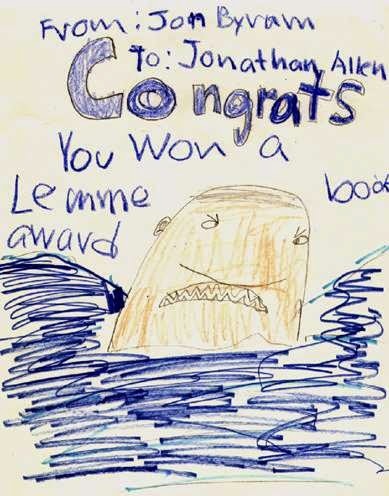 An interpretation of Norvin, the main character in 'The Great White Man-Eating Shark' by Margaret Mahy
An interpretation of Norvin, the main character in 'The Great White Man-Eating Shark' by Margaret MahyOne thing an author and/or illustrator will encounter when they have the good fortune to be published, is other people's opinions about their work, publicly expressed and very much in the public domain. Mainly in the form of reviews, but not always. When all your concentration has been on trying to get published, it's easy to forget the the additional stuff that goes with it.
These public expressions can be loosely put into three categories,-
The Good, The Bad, and The Ugly.
(Aaah-eee-aaah-eee-aah. . .Wah wah wah. . . as Ennio Morricone put it so well)
The Good -
If you are very lucky, you might get reviewed in a national publication, a Sunday Paper for instance. If that happens, it tends to be a good review, for the reason that reviewers are usually engaged in the recommendation of a few books they feel readers might want to consider this Christmas, that sort of thing. I have been lucky enough to have that happen two or three times over the (many) years and it's a good feeling to see your work in the Sunday papers ;-) Something for your parents to show the neighbours ;-)
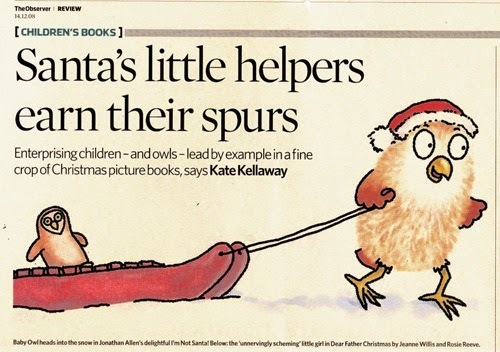
I have also been in my local paper once or twice, but I find that just a bit embarrassing so I try to lay low and not tell the local press about stuff being published etc. . . Come on, you all have local papers, you know where I'm coming from ;-)
Another really nice thing that can happen is being sent fan mail. Sometimes from parents, sometimes from children. Children's fan mail is usually sent via their school, as sometimes schools ask a class of children to pick an author each and write to them. Sometimes it's the whole class that writes. Especially after a school visit you might have done, as a kind of thank you. The best part for me is seeing their illustrations of my characters. I love children's artwork anyway, but seeing their interpretations of your creations is really magical. These are from a very long time ago, but they were the only ones I could lay hands on without much tedious rummaging, as they were already scanned and jpegged up. . .


Another cool thing that happened with 'Mucky Moose' was that a Japanese puppet group made a puppet show of the story and sent me some photos. That was great.
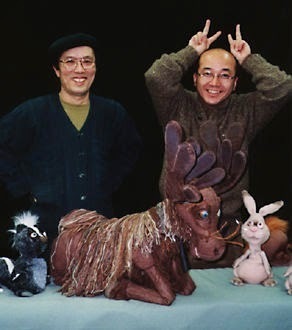
The Bad -
Occasionally, a negative review crops up in a newspaper. I illustrated a few books by the late, great Margaret Mahy, and one of them was in a list of picture books being reviewed by a very well known children's author and illustrator, namely, Raymond Briggs. He was quite snotty about my illustrations. The nerve! ;-) Fah! Oh well, at least it allowed me to unashamedly name-drop years later on Picture Book Den. . .
The growth of sites like Amazon, where people can leave reviews of your books, without having to have journalistic or any other credentials, though a mixed blessing, has meant the democratisation of the reviewing process. Anyone can leave a review. This is a good thing I think, but people can 'miss the point' of a book, and leave an unfair review just as easily as someone can leave a thoughtful and well considered one. The good usually outnumbers the bad, but it's still odd reading a bad review from someone who doesn't seem to 'get it', or is just being rude. Of course they may be pointing out flaws in your work that need pointing out, in which case it's constructive criticism and to be welcomed, but they might not. it makes you understand why many writers and performers feel it's better not to read any reviews, good or bad. After all, if a book is selling well, who cares about a bad review?
And of course, some reviews are just plain odd. A review on Amazon of my version of 'Chicken Licken' just said,
"Chicken Licken? Isn't that illegal? This book is poo."
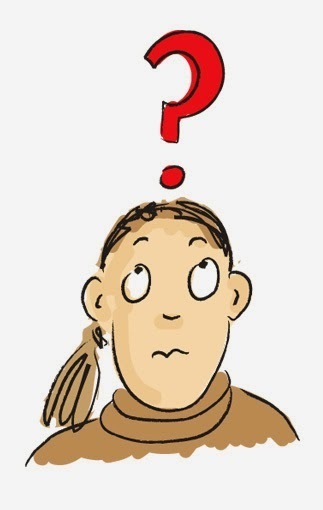
The Ugly -
This is something decidedly unpleasant that happened to one of my books a year or two ago.
I received an email from somebody I didn't know, containing a link and the advice that I 'May want to look at this', and that the publisher should be concerned. After due pause, I clicked on the link and could immediately see what they were on about.
Somebody had taken the cover of a pop-up book I did years ago called "Don't wake the Baby!" and changed it to read "Don't Rape the Baby!". The site it was on seemed to be some kind of American anti-gay hate site, that wanted to imply that gays were paedophiles. I was shocked, as you can imagine, and left a strong message for the perpetrators, telling them to remove it immediately. I also contacted the book's publishers, who were also appalled and promptly contacted the ISP to get the site taken down. The site owners meanwhile replied to my message, denying that their site was a hate site and claiming it was put up to 'promote hetrosexual love'. Yeah, right.
Anyway, after nearly sending several very angry replies, I responded to the feeling I got from them that they were enjoying the attention, and decided not to feed the beast, but to ignore it, as the publisher was very much on the case. The site was taken down shortly afterwards.
Nasty.
So you never know what proportion of Good, Bad and Ugly you may find coming your way. May it be mainly good, may you take the bad with a pinch of salt, and may nothing ugly crawl out of the woodwork and bite you!
I leave you with my favourite bit of fan mail to cheer you up after that bit of unpleasantness.
(from a good few years ago, it's been on my wall ever since, hence the blu tack and general grime)
And I extend it's wishes to you all, pausing only to wonder how old the writer is now and what she is doing now?

Published on November 01, 2014 01:30
The Good, The Bad, and The Ugly
 An interpretation of Norvin, the main character in 'The Great White Man-Eating Shark' by Margaret Mahy
An interpretation of Norvin, the main character in 'The Great White Man-Eating Shark' by Margaret MahyOne thing an author and/or illustrator will encounter when they have the good fortune to be published, is other people's opinions about their work, publicly expressed and very much in the public domain. Mainly in the form of reviews, but not always. When all your concentration has been on trying to get published, it's easy to forget the the additional stuff that goes with it.
These public expressions can be loosely put into three categories,-
The Good, The Bad, and The Ugly.
(Aaah-eee-aaah-eee-aah. . .Wah wah wah. . . as Ennio Morricone put it so well)
The Good -
If you are very lucky, you might get reviewed in a national publication, a Sunday Paper for instance. If that happens, it tends to be a good review, for the reason that reviewers are usually engaged in the recommendation of a few books they feel readers might want to consider this Christmas, that sort of thing. I have been lucky enough to have that happen two or three times over the (many) years and it's a good feeling to see your work in the Sunday papers ;-) Something for your parents to show the neighbours ;-)

I have also been in my local paper once or twice, but I find that just a bit embarrassing so I try to lay low and not tell the local press about stuff being published etc. . . Come on, you all have local papers, you know where I'm coming from ;-)
Another really nice thing that can happen is being sent fan mail. Sometimes from parents, sometimes from children. Children's fan mail is usually sent via their school, as sometimes schools ask a class of children to pick an author each and write to them. Sometimes it's the whole class that writes. Especially after a school visit you might have done, as a kind of thank you. The best part for me is seeing their illustrations of my characters. I love children's artwork anyway, but seeing their interpretations of your creations is really magical. These are from a very long time ago, but they were the only ones I could lay hands on without much tedious rummaging, as they were already scanned and jpegged up. . .


Another cool thing that happened with 'Mucky Moose' was that a Japanese puppet group made a puppet show of the story and sent me some photos. That was great.

The Bad -
Occasionally, a negative review crops up in a newspaper. I illustrated a few books by the late, great Margaret Mahy, and one of them was in a list of picture books being reviewed by a very well known children's author and illustrator, namely, Raymond Briggs. He was quite snotty about my illustrations. The nerve! ;-) Fah! Oh well, at least it allowed me to unashamedly name-drop years later on Picture Book Den. . .
The growth of sites like Amazon, where people can leave reviews of your books, without having to have journalistic or any other credentials, though a mixed blessing, has meant the democratisation of the reviewing process. Anyone can leave a review. This is a good thing I think, but people can 'miss the point' of a book, and leave an unfair review just as easily as someone can leave a thoughtful and well considered one. The good usually outnumbers the bad, but it's still odd reading a bad review from someone who doesn't seem to 'get it', or is just being rude. Of course they may be pointing out flaws in your work that need pointing out, in which case it's constructive criticism and to be welcomed, but they might not. it makes you understand why many writers and performers feel it's better not to read any reviews, good or bad. After all, if a book is selling well, who cares about a bad review?
And of course, some reviews are just plain odd. A review on Amazon of my version of 'Chicken Licken' just said,
"Chicken Licken? Isn't that illegal? This book is poo."

The Ugly -
This is something decidedly unpleasant that happened to one of my books a year or two ago.
I received an email from somebody I didn't know, containing a link and the advice that I 'May want to look at this', and that the publisher should be concerned. After due pause, I clicked on the link and could immediately see what they were on about.
Somebody had taken the cover of a pop-up book I did years ago called "Don't wake the Baby!" and changed it to read "Don't Rape the Baby!" (!!) . The site it was on seemed to be some kind of american anti gay hate site, that wanted to imply that gays were paedophiles. I was shocked, as you can imagine, and left a strong message for the perpetrators, telling them to remove it immediately. I also contacted the book's publishers, who were also appalled and promptly contacted the ISP to get the site taken down. The site owners meanwhile replied to my message, denying that their site was a hate site and claiming it was put up to 'promote hetrosexual love'. Yeah, right.
Anyway, after nearly sending several very angry replies, I responded to the feeling I got from them that they were enjoying the attention, and decided not to feed the beast, but to ignore it, as the publisher was very much on the case. The site was taken down shortly afterwards.
Nasty.
So you never know what proportion of Good, Bad and Ugly you may find coming your way. May it be mainly good, may you take the bad with a pinch of salt, and may nothing ugly crawl out of the woodwork and bite you!
I leave you with my favourite bit of fan mail to cheer you up after that bit of unpleasantness.
(from a good few years ago, it's been on my wall ever since, hence the blu tack and general grime)
And I extend it's wishes to you all, pausing only to wonder how old the writer is now and what she is doing now?

Published on November 01, 2014 01:30



